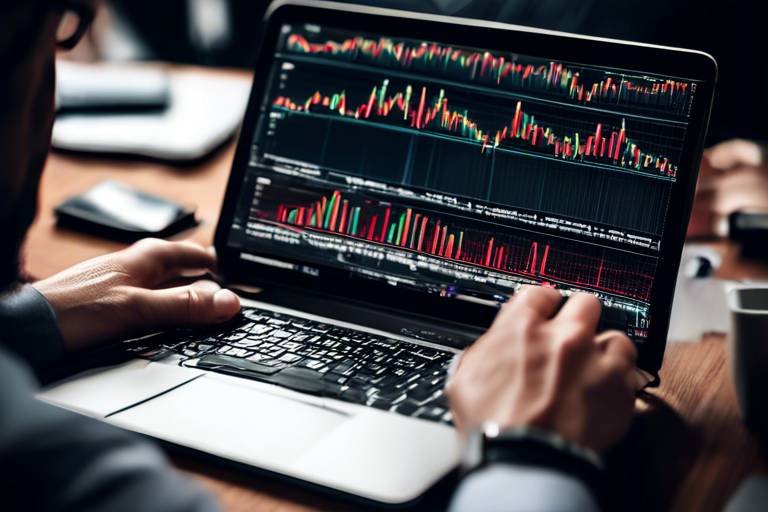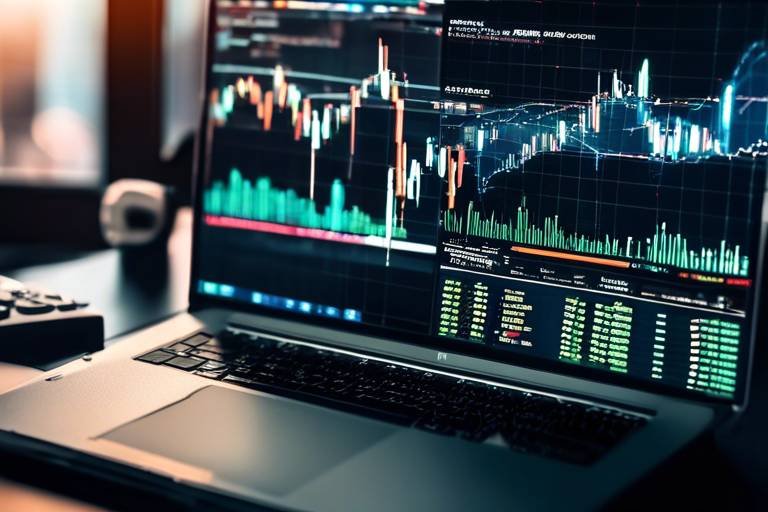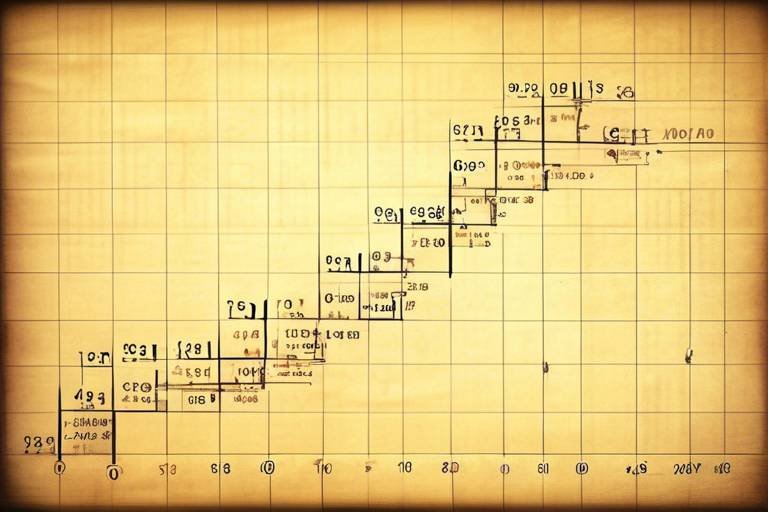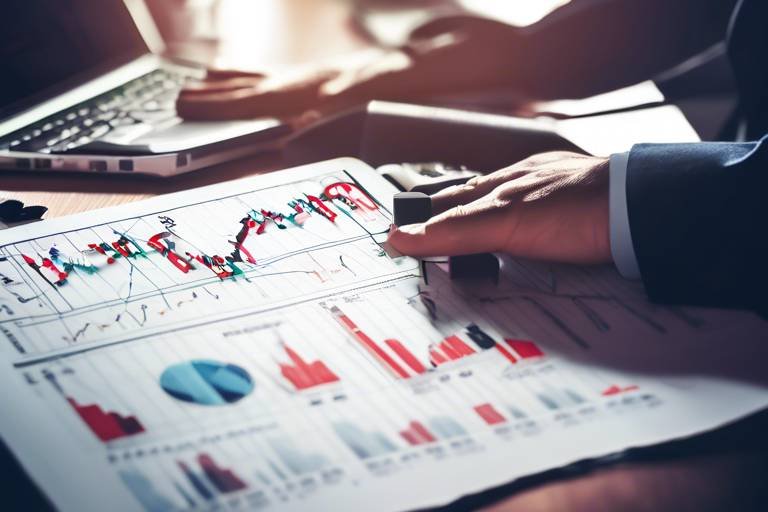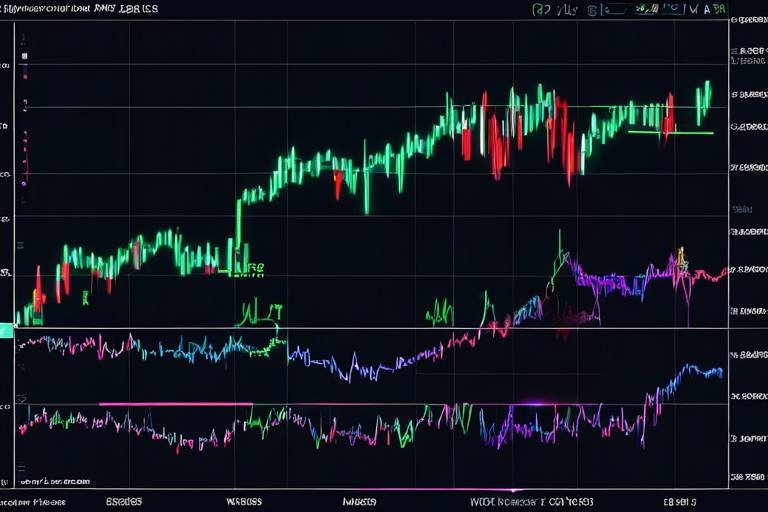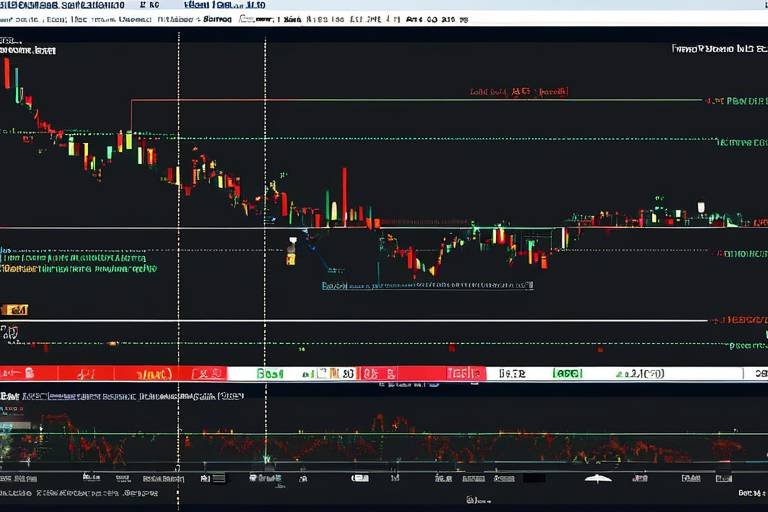The Role of News Events in Technical Market Analysis
In today's fast-paced trading environment, understanding the intricate relationship between news events and technical market analysis is more important than ever. As traders, we often find ourselves at the mercy of unpredictable market movements driven by external factors. Imagine you're navigating a ship through turbulent waters; the waves represent market volatility, while the winds symbolize news events that can either propel you forward or steer you off course. In this article, we’ll dive deep into how news events can significantly influence trader decisions and market movements, ultimately shaping trading strategies and risk management practices.
Technical market analysis is not just about crunching numbers or gazing at charts; it's about interpreting the story that the market tells through price movements and trading volumes. By evaluating historical data and identifying chart patterns, traders can gain valuable insights into market trends and potential entry or exit points. However, this analytical approach can only take us so far. Without considering the impact of news events, traders risk making decisions based on incomplete information, akin to trying to solve a puzzle with missing pieces.
News events can act like a double-edged sword in the trading world. On one hand, they can generate **excitement** and **opportunity**; on the other, they can lead to **panic** and **uncertainty**. Economic reports, geopolitical developments, and corporate announcements often lead to rapid price changes that can shake the foundations of even the most robust trading strategies. Therefore, staying informed about current events is essential for traders who wish to navigate these waters successfully.
Consider this: every time a significant news event occurs, it can trigger a chain reaction in the market. For instance, when a major economic indicator is released, traders react based on their interpretations of what it means for the economy. This reaction can be swift and dramatic, leading to substantial price movements. Understanding these reactions is crucial for traders looking to make informed decisions. It's like being a detective; you must piece together clues from various sources to get the full picture of what’s happening in the market.
In the following sections, we will explore the different types of news events that can impact market dynamics, how these events influence trader psychology, and the importance of integrating news analysis with technical analysis. By the end of this article, you'll have a comprehensive understanding of how to leverage news events to enhance your trading strategies and manage risks effectively.
- What are the most significant news events that affect the markets?
Key news events include economic indicators like GDP reports, unemployment rates, earnings announcements from major corporations, and geopolitical developments such as trade negotiations or conflicts. Each of these can have varying degrees of influence on market sentiment and price movements.
- How can I stay updated on important news events?
Traders can use news calendars, financial news websites, and market analysis platforms to stay informed about upcoming events. Subscribing to newsletters or following financial analysts on social media can also provide timely updates.
- What is the best way to integrate news with technical analysis?
One effective method is to use news events to confirm technical signals. For example, if a technical indicator suggests a potential upward trend, a positive news event can strengthen that signal. Conversely, if negative news emerges, it may indicate a reversal.

Understanding Technical Market Analysis
Technical market analysis is a fascinating approach that traders utilize to predict future price movements in financial markets. Instead of focusing on the underlying fundamentals of a security, such as its earnings or economic indicators, technical analysis emphasizes the patterns and trends revealed through price movements and trading volumes. It's like reading a map that shows you where the market has been and where it might be headed next. By analyzing historical data, traders can identify key levels of support and resistance, which serve as crucial points for making buy or sell decisions.
One of the fundamental principles of technical analysis is the belief that all relevant information is already reflected in the price. This means that price movements are not random; they are influenced by the collective actions of all market participants. Traders use various tools and techniques, such as charts, indicators, and patterns, to interpret market behavior. For example, a trader might look at a candlestick chart to identify bullish or bearish trends, helping them decide when to enter or exit a trade.
To better understand technical analysis, it's essential to familiarize yourself with some of the key components that traders rely on:
- Price Charts: These visual representations of price movements over time are the backbone of technical analysis. Common types include line charts, bar charts, and candlestick charts.
- Indicators: Tools like moving averages, Relative Strength Index (RSI), and Bollinger Bands help traders gauge market momentum and potential reversals.
- Chart Patterns: Recognizing patterns such as head and shoulders, triangles, and flags can provide insights into future price movements.
By combining these elements, traders can create a comprehensive picture of market dynamics. For instance, if a trader notices a rising trend on the chart alongside a bullish signal from an indicator, they might feel more confident in taking a long position. Conversely, if the market shows signs of weakness, such as a bearish divergence, it may signal an opportunity to sell or short the asset.
It's important to note that technical analysis is not foolproof. While it can provide valuable insights, it is inherently based on probabilities rather than certainties. Market conditions can change rapidly, especially in response to unexpected news events or economic shifts. Therefore, traders must remain adaptable and continuously refine their strategies. Ultimately, successful technical analysis requires a blend of skill, experience, and a keen understanding of market psychology.
In conclusion, understanding technical market analysis is essential for traders seeking to navigate the complexities of financial markets. By leveraging historical data and chart patterns, traders can make informed decisions that align with market trends. However, it's crucial to integrate this analysis with broader market awareness, including the impact of news events, to enhance trading effectiveness.

The Impact of News on Markets
News events are like the weather for traders; they can change the market landscape in an instant. Just as a sudden storm can disrupt a sunny day, unexpected news can send shockwaves through financial markets, leading to rapid price fluctuations and shifts in trader sentiment. Understanding how news impacts markets is crucial for anyone looking to navigate the often-turbulent waters of trading. When a major economic report is released or a significant geopolitical event unfolds, traders must be prepared for the potential consequences. The relationship between news and market movements is not only fascinating but also vital for developing effective trading strategies.
For instance, consider the release of a key economic indicator, such as the unemployment rate. If the rate decreases unexpectedly, it can lead to a surge in market confidence, causing stock prices to rise. Conversely, if the unemployment rate increases, it may lead to panic selling. This is why traders must stay informed and be ready to react swiftly. The ability to interpret news events and their potential impact on market dynamics can be the difference between profit and loss.
Moreover, the influence of news extends beyond just economic indicators. Geopolitical developments, such as conflicts, trade negotiations, or election outcomes, can create significant market volatility. Traders often find themselves in a race against time, trying to interpret the implications of these events on their positions. This is where understanding the broader context becomes essential. A single headline can shift market sentiment dramatically, and being able to read between the lines can provide traders with a competitive edge.
To illustrate the impact of news on markets, let's take a look at a table summarizing various types of news events and their potential effects:
| Type of News Event | Potential Impact on Markets |
|---|---|
| Economic Indicators | Can lead to significant price movements based on perceived economic health. |
| Earnings Reports | Influences stock prices based on company performance and future guidance. |
| Geopolitical Developments | Creates uncertainty, often resulting in increased volatility and market reactions. |
| Central Bank Announcements | Can shift market expectations regarding interest rates and monetary policy. |
In summary, news events serve as catalysts that can either propel the markets forward or cause them to retreat. Traders who can effectively analyze and interpret these events are better positioned to make informed decisions. By staying updated on current events and understanding their potential impacts, traders can navigate the complexities of the market with greater confidence.
- How do news events affect market volatility? News events can create sudden and significant price movements, leading to increased volatility as traders react to new information.
- What types of news should traders pay attention to? Traders should focus on economic indicators, earnings reports, geopolitical developments, and central bank announcements, as these can greatly influence market sentiment.
- How can traders prepare for news events? Traders can use news calendars to track upcoming events and adjust their strategies accordingly, ensuring they are ready to respond to potential market changes.

Types of News Events
When it comes to trading, not all news is created equal. Different types of news events can influence the market in unique ways, and understanding these distinctions can be the key to making informed trading decisions. Broadly speaking, we can categorize news events into several types, each with its own impact on trader psychology and market dynamics.
First and foremost, we have economic indicators. These are crucial reports that offer insights into a country's economic performance. For example, metrics like GDP growth, inflation rates, and unemployment figures can significantly sway market sentiment. When traders see a rise in GDP, they might feel optimistic about the economy, leading to increased buying activity. Conversely, a spike in unemployment could trigger fears of an economic downturn, causing traders to sell off their positions. It's like watching a movie where the plot twists can change the audience's reaction in an instant!
Next, we have earnings reports, which are particularly important for stock traders. Companies typically release their earnings quarterly, and these reports can cause stock prices to soar or plummet. A company that beats earnings expectations often sees its stock price jump, while missing the mark can lead to a swift decline. Traders keenly analyze these reports, looking for trends that could signal future performance. For instance, if a tech company consistently reports strong earnings, it might indicate a robust sector, prompting traders to invest more heavily in similar stocks.
Then we have political announcements. These can range from government policy changes to election results, and their impact on markets can be profound. For example, a new trade agreement might boost investor confidence in certain sectors, leading to a rally in those stocks. On the flip side, political instability can create uncertainty, prompting traders to flee to safer assets like gold or government bonds. It’s much like watching a game of chess; one unexpected move can change the entire strategy!
Lastly, we can't overlook geopolitical developments. Events such as international conflicts, trade negotiations, or sanctions can create waves in the market. For instance, news of a trade war can lead to volatility in currency and commodity markets. Traders need to stay alert and assess how these developments might affect their strategies. Just as a sudden storm can change the course of a ship at sea, unexpected geopolitical events can alter market trends rapidly.
In summary, understanding the types of news events is vital for traders. By recognizing how economic indicators, earnings reports, political announcements, and geopolitical developments can influence market dynamics, traders can better position themselves for success. It’s not just about reading the news; it’s about interpreting it in a way that informs your trading strategy. The world of trading is ever-evolving, and staying ahead of the curve means being aware of these critical news events.
- What are economic indicators?
Economic indicators are statistics that provide insights into a country's economic performance, such as GDP growth, unemployment rates, and inflation. - How do earnings reports affect stock prices?
Earnings reports reveal a company's profitability and performance. Positive results can lead to stock price increases, while negative results can cause declines. - Why are political announcements important for traders?
Political announcements can impact market sentiment and investor confidence, affecting trading strategies and asset prices. - What role do geopolitical developments play in trading?
Geopolitical developments can create uncertainty and volatility in markets, prompting traders to adjust their positions based on potential risks.

Economic Indicators
Economic indicators are like the pulse of a nation’s economy, providing essential insights into its overall health. These indicators are statistical metrics that reflect the economic performance and can significantly influence market sentiment. For traders, understanding these indicators is crucial as they can lead to substantial market movements. Think of them as the breadcrumbs that lead you to a larger understanding of market dynamics. When key indicators are released, they can either bolster confidence or induce fear among investors, causing price fluctuations that traders must navigate.
Some of the most impactful economic indicators include:
- Gross Domestic Product (GDP): This measures the total value of all goods and services produced in a country. A rising GDP often signals a healthy economy, while a declining GDP can indicate trouble ahead.
- Unemployment Rate: This statistic reflects the percentage of the labor force that is jobless and actively seeking employment. A high unemployment rate can lead to decreased consumer spending, which affects overall economic growth.
- Consumer Price Index (CPI): This measures the average change over time in the prices paid by consumers for goods and services. It’s a key indicator of inflation, which can influence central bank policies.
- Retail Sales: This data indicates the total receipts of retail stores and is a vital measure of consumer spending trends.
When these indicators are released, they can trigger immediate reactions in the markets. For example, if GDP growth exceeds expectations, traders might rush to buy stocks, anticipating a bullish market. Conversely, if unemployment rates rise unexpectedly, it could lead to a sell-off as traders brace for potential economic downturns. The relationship between these indicators and market movements underscores the importance of staying informed.
Moreover, it’s not just the numbers that matter; the context surrounding these indicators is equally important. Traders should consider factors such as previous trends, market expectations, and even geopolitical circumstances that may influence the data. For instance, if a country is experiencing a trade war, even a positive GDP report might not lead to the expected market rally.
To illustrate the impact of economic indicators, let’s take a look at a hypothetical scenario:
| Indicator | Previous Value | Current Value | Market Reaction |
|---|---|---|---|
| GDP Growth Rate | 2.5% | 3.0% | Positive – Stock prices rise |
| Unemployment Rate | 5.0% | 6.5% | Negative – Stock prices drop |
| CPI | 1.8% | 2.5% | Negative – Concerns over inflation |
In conclusion, economic indicators serve as vital signposts for traders navigating the often-turbulent waters of the financial markets. By keeping a close eye on these metrics and understanding their implications, traders can make more informed decisions, aligning their strategies with the broader economic landscape. Remember, the key is not only to watch the indicators but to interpret them within the context of current events and market sentiment.
- What are economic indicators? Economic indicators are statistical measures that provide insights into the economic performance of a country, influencing market sentiment and trader decisions.
- Why are economic indicators important for traders? They help traders gauge the health of an economy, predict market movements, and make informed trading decisions.
- How can I stay updated on economic indicators? Traders can use economic calendars, financial news websites, and market analysis platforms to stay informed about upcoming economic reports and their potential impacts.

Geopolitical Developments
Geopolitical developments are like the unpredictable weather patterns of the financial markets. Just as a sudden storm can alter your plans for a picnic, unexpected geopolitical events can dramatically shift market dynamics, leaving traders scrambling to adjust their strategies. These events encompass a wide range of occurrences, from military conflicts to international trade agreements, and they often introduce a layer of uncertainty that traders must navigate carefully.
When a country faces political turmoil, such as protests or regime changes, the ripple effects can be felt across global markets. For instance, consider the impact of a military conflict in a resource-rich region. Traders often react swiftly, leading to fluctuations in commodity prices, currency valuations, and stock indices. This reaction is not merely based on the event itself, but on the perceived implications for global trade and economic stability. In other words, when geopolitical tensions rise, it's like throwing a stone into a calm pond—the ripples spread far beyond the initial point of impact.
Moreover, geopolitical developments can create a sense of fear or optimism among traders, influencing their decision-making processes. For example, when a country announces a new trade agreement that promises to boost economic growth, traders might respond positively, driving up stock prices. Conversely, news of sanctions or military escalations can lead to panic selling, as investors rush to cut their losses. Understanding these psychological factors is crucial for traders who want to stay ahead of the curve.
To illustrate the potential impact of geopolitical events, consider the following table that summarizes recent significant geopolitical developments and their market effects:
| Event | Date | Market Impact |
|---|---|---|
| U.S.-China Trade Agreement | January 2020 | Stock markets surged; increased investor confidence |
| Middle East Tensions | December 2019 | Oil prices spiked; stock markets dipped |
| Brexit Negotiations | October 2019 | Volatility in the British Pound; mixed reactions in European markets |
In conclusion, traders must remain vigilant and informed about geopolitical developments. It's not just about reading the headlines; it's about understanding the underlying implications and how they may influence market behavior. By integrating this knowledge with technical analysis, traders can better position themselves to capitalize on opportunities and mitigate risks. After all, in the world of trading, knowledge is power, and staying ahead of geopolitical shifts can make all the difference.
- What are geopolitical developments? Geopolitical developments refer to events that influence a country's political landscape and can affect global markets, such as conflicts, treaties, or economic sanctions.
- How do geopolitical events affect trading? These events can lead to market volatility, influencing trader sentiment and causing rapid price changes in various assets.
- Why is it important for traders to monitor geopolitical news? Understanding geopolitical news helps traders anticipate market movements and adjust their strategies accordingly, reducing risks and maximizing potential gains.

Market Reactions to News
When news breaks, markets can react with the speed of a lightning bolt! Traders often find themselves navigating a sea of volatility, where prices can swing dramatically based on the latest headlines. This is because news events trigger emotional responses in traders, leading to rapid buying or selling. Imagine walking into a crowded room and announcing a surprise party; the excitement and chatter would create an immediate buzz. Similarly, news can spark a frenzy in the market, causing traders to scramble to adjust their positions.
Understanding how to interpret these market reactions is crucial for making informed trading decisions. For instance, when a major economic report is released, such as the monthly jobs report, traders analyze the data not just for its content but also for its implications on market sentiment. A better-than-expected jobs report might lead to a surge in stock prices, while a disappointing one could send them plummeting. This is where the concept of market sentiment comes into play—it's the collective mood of traders that drives prices in the short term.
To illustrate this, let’s consider a recent example. When the Federal Reserve announces a change in interest rates, traders react almost instantaneously. A rate hike might indicate a stronger economy, leading to bullish sentiment, while a cut could signal economic weakness, resulting in bearish behavior. The following table summarizes how different types of news can influence market reactions:
| Type of News | Market Reaction |
|---|---|
| Economic Reports | Rapid price changes based on data relevance |
| Corporate Earnings | Stock price spikes or drops depending on results |
| Geopolitical Events | Increased volatility and uncertainty |
Moreover, it’s important to note that not all news is created equal. Some events have a more pronounced effect on the markets than others. For example, a high-profile corporate scandal might lead to a sharp decline in stock prices, while a minor economic indicator might only cause a brief fluctuation. Traders must stay vigilant and differentiate between impactful news and noise. This discernment allows them to capitalize on opportunities while avoiding unnecessary risks.
In summary, market reactions to news are often swift and dramatic, driven by trader sentiment and the perceived implications of the news. By honing their ability to interpret these reactions, traders can make more informed decisions, ultimately enhancing their trading strategies and risk management practices.
- How can I stay updated on news events that impact the market? You can subscribe to financial news websites, follow economic calendars, and use trading platforms that provide real-time news updates.
- What should I do if I’m caught in a volatile market reaction? It's crucial to have a risk management strategy in place, such as using stop-loss orders to protect your capital.
- Are all news events equally impactful on the markets? No, some news events have a more significant impact than others. Understanding the context and importance of the news is essential for traders.

Integrating News with Technical Analysis
When it comes to trading, the ability to integrate news with technical analysis can be a game changer. It’s like having a secret weapon in your trading arsenal. While technical analysis focuses on price movements and historical data, news events can provide the context that drives those movements. Imagine trying to navigate a ship without knowing the weather forecast; you might be sailing smoothly one moment and caught in a storm the next. Similarly, understanding the news landscape allows traders to make informed decisions that align with market sentiment.
For instance, let’s say you’re analyzing a stock that has been on a steady upward trend. You notice a technical indicator suggesting it’s time to buy. However, if there’s a major economic report set to be released soon—like a jobs report or inflation data—you might want to reconsider your timing. This is where the integration comes into play. By keeping an eye on upcoming news events, you can better gauge whether to act on technical signals or hold off until the dust settles.
One effective method for integrating news with technical analysis is through the use of news calendars. These calendars provide a schedule of important economic events, earnings reports, and geopolitical developments that could impact the market. By regularly checking these calendars, traders can prepare for potential volatility and adjust their strategies accordingly. For example, if you see that a major company is set to release its quarterly earnings, you might want to analyze how the stock has historically reacted to earnings announcements. This could help you decide whether to enter or exit a position.
Moreover, understanding the market's psychological reactions to news can enhance your trading strategy. For example, if a country reports unexpectedly high GDP growth, the market may react positively, pushing prices higher. Conversely, negative news, like a sudden political crisis, can lead to panic selling. By observing how prices move in response to news events, traders can identify patterns that may not be immediately apparent through technical analysis alone.
Incorporating news analysis also allows traders to confirm technical signals. For example, if your technical analysis indicates a bullish trend but a significant geopolitical event is looming, it might be wise to exercise caution. On the other hand, if your analysis shows a bullish pattern and the news is supportive—like favorable economic data—this could reinforce your decision to enter a trade. The synergy between news and technical analysis can ultimately lead to more informed and confident trading decisions.
In conclusion, integrating news with technical analysis isn't just beneficial; it's essential for navigating today’s fast-paced trading environment. By staying informed about current events and understanding their potential impact on market dynamics, traders can enhance their strategies, manage risks more effectively, and increase their chances of success in the markets.
- How can I stay updated on news events? You can subscribe to financial news websites, use news aggregators, or follow economic calendars provided by trading platforms.
- What is the best way to combine news and technical analysis? Use news events to confirm technical signals or to adjust your trading strategy based on anticipated market reactions.
- Are there specific news events that are more impactful than others? Yes, events like central bank announcements, major economic indicators, and political developments typically have a more significant impact on market movements.

Using News Calendars
In the fast-paced world of trading, timing is everything. This is where news calendars come into play. A news calendar is a tool that traders use to keep track of upcoming economic events and announcements that could impact the markets. By having access to this information, traders can prepare their strategies and make informed decisions that align with market movements.
Think of a news calendar as your personal assistant in the trading world. Just like how you wouldn’t want to miss an important meeting or event, you certainly don’t want to be caught off guard by significant news releases that could affect your trades. Economic indicators, earnings reports, and geopolitical developments are just a few examples of the events you’ll find on a news calendar. These events are often scheduled in advance, giving traders the opportunity to plan their actions accordingly.
Moreover, news calendars typically categorize events by their expected impact on the market, which can be classified as high, medium, or low. This categorization allows traders to prioritize which events to watch closely. For instance, a high-impact event, such as a central bank meeting or a major employment report, could lead to significant price volatility. On the other hand, low-impact events might not warrant immediate attention. Here’s a simple breakdown of how you might categorize these events:
| Impact Level | Examples | Market Reaction |
|---|---|---|
| High | Central Bank Interest Rate Decisions, Non-Farm Payrolls | Significant volatility, potential trend changes |
| Medium | Retail Sales, GDP Growth Rates | Moderate price fluctuations |
| Low | Minor Economic Reports, Consumer Confidence Index | Minimal impact on market |
To effectively use a news calendar, traders should integrate it into their daily routine. This means checking the calendar at the beginning of each trading day to identify any significant events on the horizon. Additionally, it’s wise to review the calendar periodically throughout the day, especially when you’re actively trading. By doing so, you can adjust your positions or strategies based on the latest updates and avoid unexpected surprises.
In conclusion, utilizing a news calendar is an essential part of a trader's toolkit. It not only helps you stay informed about upcoming events but also enhances your ability to react swiftly and strategically to market changes. The more prepared you are, the better your chances of succeeding in the ever-changing landscape of the financial markets.
- What is a news calendar? A news calendar is a schedule of upcoming economic events and announcements that can affect market conditions.
- How do I use a news calendar effectively? Check it regularly to identify high-impact events and adjust your trading strategies accordingly.
- What types of events are listed on a news calendar? Economic indicators, earnings reports, and geopolitical developments are common types of events.
- Why is it important to follow news events? News events can cause rapid price changes, so staying informed helps traders make timely decisions.

Risk Management Strategies
When it comes to trading, especially during volatile news events, having a solid risk management strategy is not just important; it's essential. Imagine stepping into a boxing ring without a plan; you might land a few punches, but ultimately, you’ll be knocked out if you don't defend yourself properly. Similarly, in trading, if you fail to manage risk, you might face devastating losses. So, how can traders effectively protect their investments while navigating the unpredictable waters of the market?
One of the most effective methods is to implement stop-loss orders. A stop-loss order is like a safety net that automatically sells your position when it reaches a certain price. This helps you limit your losses and prevents emotional decision-making during high-stress moments. For example, if you buy a stock at $50 and set a stop-loss at $45, your loss is capped at $5 per share. This simple yet powerful tool can be a game-changer, especially when news hits that causes rapid price fluctuations.
Another crucial aspect of risk management is adjusting your position sizes. Think of this as your trading weight class. If you’re trading with a smaller account, you wouldn't want to take large positions that could wipe you out in one bad trade. Instead, calculate how much of your total capital you are willing to risk on a single trade, often recommended to be no more than 1-2% of your trading capital. This way, even if a few trades go against you, your account remains intact, allowing you to fight another day.
Additionally, diversifying your trades can help mitigate risk. By spreading your investments across different asset classes or sectors, you reduce the impact of a poor-performing investment on your overall portfolio. Just like a well-balanced diet includes a variety of foods for optimal health, a diversified portfolio can withstand the shocks that come from unexpected news events.
To further enhance your risk management strategy, consider using a trading journal. Keeping track of your trades, the reasons behind them, and the outcomes can provide valuable insights into your trading behavior. Over time, you’ll start to notice patterns that can help you refine your strategy and make more informed decisions in the future.
In summary, effective risk management strategies are vital for any trader looking to navigate the tumultuous waters of news events. By employing stop-loss orders, adjusting position sizes, diversifying your investments, and maintaining a trading journal, you can significantly improve your chances of success while minimizing potential losses. Remember, in trading, it's not just about making profits; it's about preserving your capital to continue trading in the long run.
- What is a stop-loss order? A stop-loss order is an instruction to sell a security when it reaches a certain price, helping to limit potential losses.
- How do I determine my position size? Calculate the amount you are willing to risk on a trade, typically no more than 1-2% of your total trading capital.
- Why is diversification important in trading? Diversification helps reduce the impact of a poor-performing investment on your overall portfolio, spreading risk across different assets.
- What should I include in my trading journal? Record details of your trades, including entry and exit points, reasons for the trade, and the outcome to identify patterns and improve your strategy.
Frequently Asked Questions
- What is technical market analysis?
Technical market analysis is the process of evaluating price movements and trading volumes to predict future market behavior. By analyzing historical data and chart patterns, traders can gain insights into market trends and identify potential entry or exit points.
- How do news events impact trading decisions?
News events can significantly sway market sentiment and volatility. Economic reports, geopolitical developments, and corporate announcements often lead to rapid price changes, making it crucial for traders to stay informed and adjust their strategies accordingly.
- What types of news events should traders pay attention to?
Traders should monitor various news events, including economic indicators (like GDP and unemployment rates), earnings reports from companies, and significant political announcements. Each type can have different effects on market dynamics and trader psychology.
- How do economic indicators influence the market?
Economic indicators provide insights into a country's economic health, and reports such as GDP growth or unemployment rates can lead to significant market movements. Traders must closely monitor these indicators to anticipate potential market shifts.
- What are geopolitical developments, and why are they important?
Geopolitical developments, such as conflicts or trade negotiations, create uncertainty in the markets. Traders need to assess how these events might impact market conditions to adjust their trading strategies effectively.
- How do markets typically react to news events?
Markets often react quickly to news events, with price movements reflecting trader sentiment. Understanding these reactions can help traders make informed decisions and capitalize on market volatility.
- Can news analysis improve technical trading strategies?
Absolutely! By integrating news analysis with technical market analysis, traders can enhance their strategies. News events can confirm technical signals or indicate potential reversals, leading to better decision-making.
- What is a news calendar, and how can it help traders?
A news calendar is a tool that helps traders track upcoming economic events and their potential market impact. By staying updated on scheduled releases, traders can prepare and plan their trading activities more effectively.
- What risk management strategies should be employed during news events?
Implementing effective risk management strategies is crucial when trading around news events. Traders can use stop-loss orders and adjust their position sizes to help mitigate potential losses during volatile market conditions.





